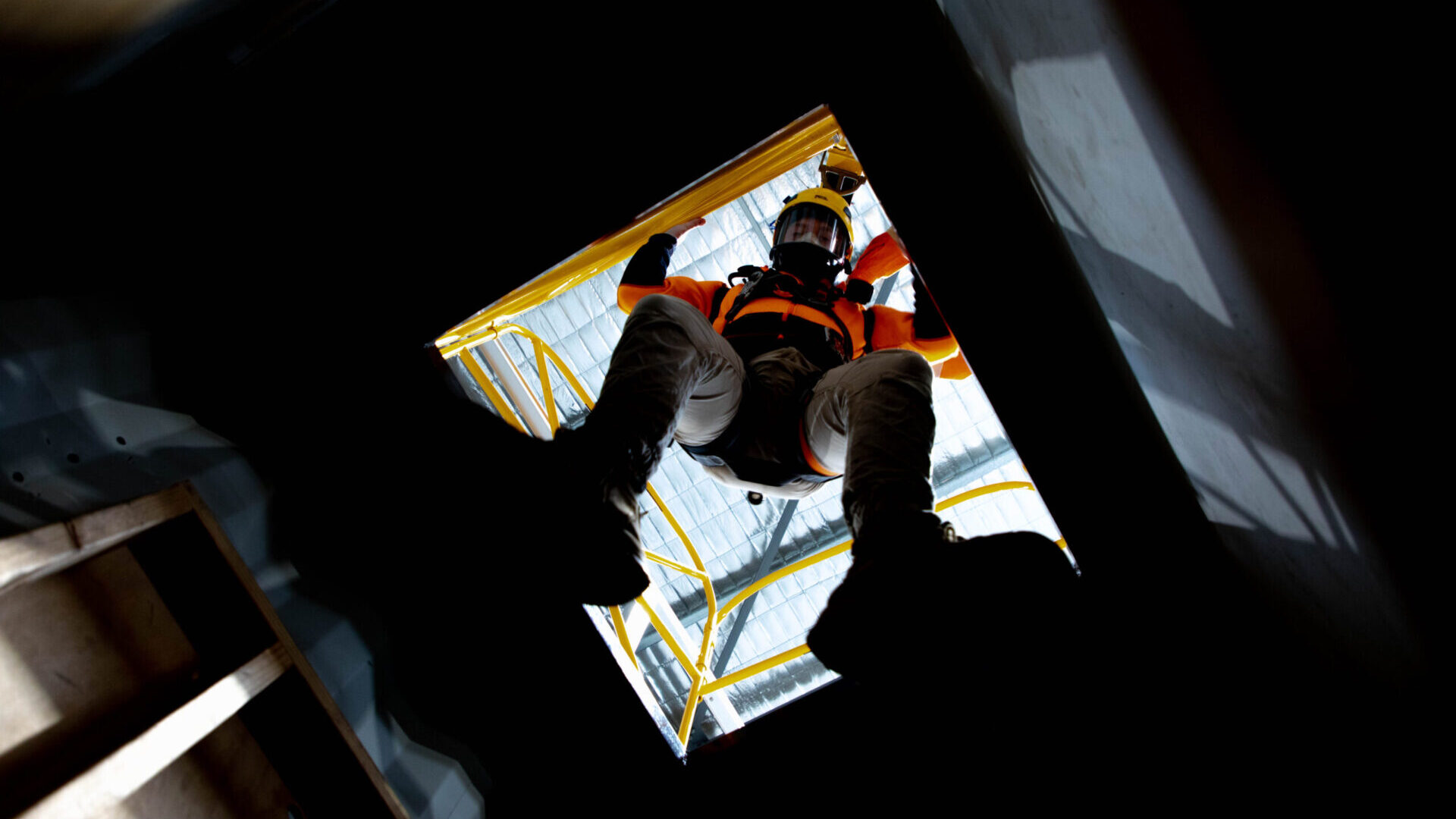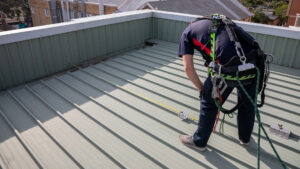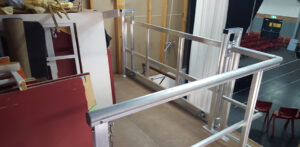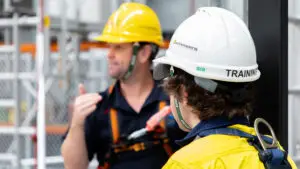Confined spaces are a common high risk area that people may find themselves working in on a regular basis.
Although accidents and fatalities are not as prevalent in workplace injury statistics, the risks are still present and must be managed accordingly. Confined space work also has one of the highest rates of ‘Rescuer Fatalities’ in the workplace.
It is vital that workers who need to access or work in a confined space understand what the associated risks are. It is also absolutely crucial that they are trained in safe work methods.
What is a confined space?
SafeWork Australia categorises an area as being a confined space when it meets the following criteria:
- Is not designed or intended to be occupied by human beings and,
- Is at normal atmospheric pressure – or is designed or intended to be at normal atmospheric pressure – while a person is in the space and,
- Is enclosed, or partially enclosed and has a limited means of access and egress to and from the space and,
- Is a risk to health and safety from at least one or more of the following conditions:
- An atmosphere that does not have a safe oxygen level or,
- Contaminants including airborne gases, vapors and dusts that may cause injury from inhalation or fire and explosion or,
- Has harmful concentrations of any airborne contaminants
- Is at risk of engulfment by a fluid or free flowing solids (e.g. grain or seeds).
Where might I find myself working in a confined space?
Confined spaces occur in the workplace more frequently than you may think. While many of us picture a confined space as being a tunnel or an underground pit, there are several areas of a workplace that can meet the classification for being a confined space. These include:
- Silos vats and tanks
- Trenches
- Pipes, ducts, flues and chimneys
- Containers and pressure vessels
- Underground sewers, wet or dry wells and shafts
What are some of the risks associated with working in confined spaces?
Confined spaces pose many different risks to those who work in them. For example, poor ventilation can cause hazardous atmospheres to develop at an accelerated rate while limited access points can make egress difficult. Reduced visibility is another concern that needs to be taken into account and can lead to serious accidental injury.
According to SafeWork NSW, some other common risks include:
- Suffocation from oxygen deficiency
- Fire or explosion
- Loss of consciousness, injury or death from contaminants in the air
- Crushing or suffocation from something like grain, sand, flour or fertilizer
Why is it important to manage the risks when working in confined spaces?
The consequences of not adequately addressing the risks of working in confined spaces can be swift and severe.
According to the Daily Telegraph, in 2017 SafeWork NSW successfully prosecuted 34 offenders and issued 218 penalty notices relating to confined space safety breaches.
In 2018, a Central Coast company was fined after two young workers were overcome by fumes from thinners as a result of working in a 12m³ space with poor ventilation. The workers were not trained in confined space safety and were also not provided with PPE.
September 2020 saw the operators of a paper mill in Albury prosecuted following the tragic deaths of two workers, and seriously injury of a third, after they were exposed to Hydrogen Sulphide.
These cases, like many other similar ones across Australia, highlight the importance of correct training and use of PPE when working in confined spaces.
How can risks be managed?
The safest way to mitigate the risks of working in confined spaces is to always minimise worker exposure as much as possible. However, when exposure cannot be avoided, all relevant Persons Conducting a Business or Undertaking (PCBUs) must ensure they have done everything possible to assess and manage the risks on behalf of their workers.
According to SafeWork NSW, a written risk assessment must be completed prior to entry by a competent person with the right knowledge and skills of all the possible risks of entering, or working in or near a confined space. That person needs to review and revise it when necessary and include:
- An entry permit
- Signage
- Communication and monitoring
- Practicing your emergency procedures
- Ensuring all workers are informed, trained and well instructed
How can I find out more about confined space safety and risk assessment?
Height Safety Engineers offer a combined and comprehensive training course that includes confined space training, breathing apparatus and cardiopulmonary resuscitation. This guarantees a comprehensive suite of skills for those seeking to ensure their workplace safety skills are adequate for this dangerous environment, and can account for a wide variety of situations.
Our popular one-day confined space training course runs regularly at our state-of-the-art training facilities in Sydney and Dubbo. Our RTO number is 91227.
To discuss your training needs, or to learn more about any of our courses, you can contact our training team by calling 1300 884 978 or emailing us at enquiries@heightsafety.net.





